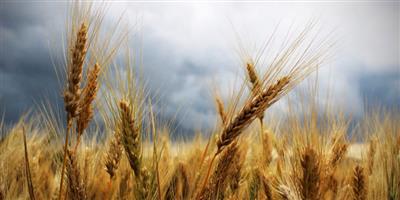by Anton Bekkerman, associate professor in the Department of Agricultural Economics and Economics at Montana State University
Originally posted on December 1, 2016 on AGECONMT.com
What happened in the United States in 1970? The Beatles broke up. The voting age was lowered to 18. The U.S. Environmental Protection Agency began operations. Simon & Garfunkel’s “Bridge Over Troubled Water” ended as the year’s top song.
What else happened in 1970? This was the last year that U.S. farmers planted fewer than 49 million acres of wheat. That is, until 2017.
The U.S. Department of Agriculture is predicting that producers will only plant 48 million acres of wheat. The two figures below show the decreasing trend in planted wheat acres in the United States and the four major wheat producing states in the northern Great Plains (with Montana being the only exception).
Chart notes: Historical data are from the USDA National Agricultural Statistical Service and projections are from the USDA Office of the Chief Economist. Data represent all winter and spring wheat classes and durum wheat.
Chart notes: Historical data are from the USDA National Agricultural Statistical Service and projections are proportional to U.S. projections provided by the USDA Office of the Chief Economist. Data represent all winter and spring wheat classes and durum wheat.
What’s driving this trend? This is a natural response by producers to lower wheat prices, which both USDA long term projections and futures markets expect to continue over the next several years. Last year, we observed a similar reduction in planted wheat acres, but particularly favorable production conditions in the United States led to historically high yields, foiling the market’s attempt to “cure” low prices by reducing supply.
As a result, data compiled by the USDA Economics Research Service show that 2016 U.S. stocks are 17.2{e1c719bd29d6bb84a792d8ffcb03a61a093900316f2da3efbd39b86f03d248b8} higher than already historically high stocks in 2015, and 64.5{e1c719bd29d6bb84a792d8ffcb03a61a093900316f2da3efbd39b86f03d248b8} higher than the average wheat stocks over the preceding 25 years. Similarly, global wheat stocks were 3.4{e1c719bd29d6bb84a792d8ffcb03a61a093900316f2da3efbd39b86f03d248b8} higher than in 2015 and 35.8{e1c719bd29d6bb84a792d8ffcb03a61a093900316f2da3efbd39b86f03d248b8} higher than the average stocks between 1996 and 2015.
What’s the good news for producers? First, unless there is another historically good production year or a major reduction in the demand for wheat, the continued decline in wheat production is likely to stabilize and potentially prop up wheat prices. Second, it’s an excuse to dust off those bell-bottoms and find those Donna Summer LPs.
Dr. Anton Bekkerman is an associate professor in the Department of Agricultural Economics and Economics at Montana State University, joining the faculty in 2009 after completing his PhD at North Carolina State University. Bekkerman's primary areas of research are grain marketing, basis and price forecast modeling, understanding how grain prices are affected by changes in supply chain infrastructures and quality demands, and analyzing the economic trade-offs of adopting alternative dryland cropping systems in Montana. One of his current projects is an investigation of how new grain loading technologies are affecting prices that Montana farmers receive for their wheat. Bekkerman is also examining the economic impacts that Montana's rapidly expanding dry pulse industry will have on the state's crop industry. Although Bekkerman grew up on the east coast, he has recently made a small step toward production agricultural after acquiring three backyard chickens.
pixabay photo


